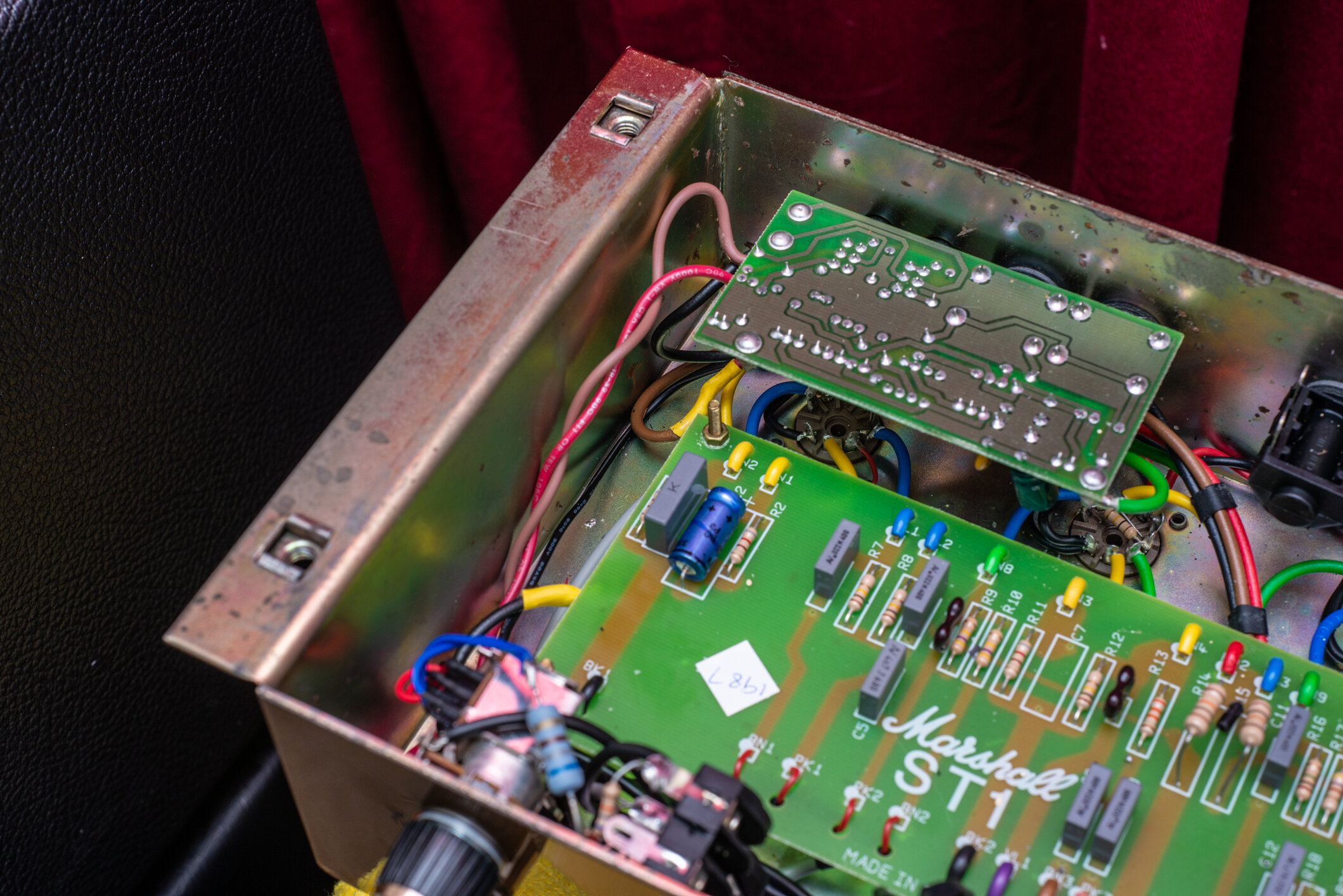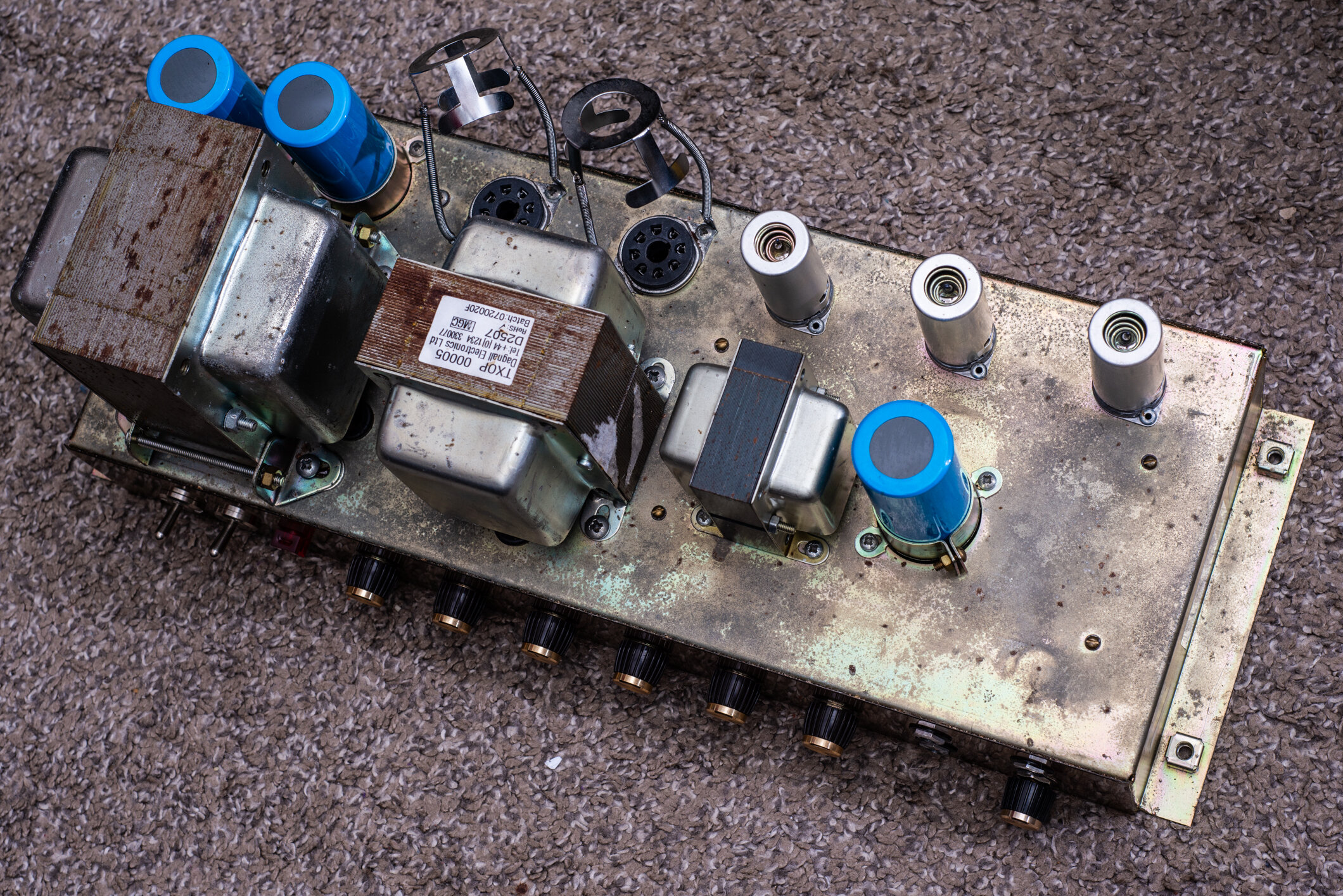I was just so thrilled with my PWE Event Horizon that days after it arrived, I spotted an EH3, the latest model, for sale online and marked down substantially. I couldn’t resist and wanted to find out the differences between them for myself, so I ordered it.
In short - this is another highly impressive amp build and it is quite different from the original EH I already have.
This one actually has a serial number, dating it to 2017. This time, it is a true three channel amp. The Hyperon control is gone, but the Tachyon control lives on but without it’s cool name as a 4-position rotary bright cap selector. There are separate bright controls for each channel.
Clean and Crunch channels share an EQ, but have separate gain and volume level controls. The “blow” channel returns and is similar to the high gain mode of the original EH, however interestingly the EH3 has less gain on channel 3 than the original EH has available on tap. However, this solves my only complaint with the original EH and you can now jump from clean, crunch, and lead tones all from the footswitch (which I’m sorely missing as it was not included). This time, the clean channel is capable of a bit more dirt and sounds even better than the original for chording and strumming, though I think the original EH’s clean could rival even the best jazz amps for that style of clean tone.
Since I always have at least some complaints about any amp, here’s my issue with this one: the “blow” channel completely flubs out when using high output pickups. I’m not sure if there is a mismatch, crossover distortion, or maybe just simply too much bass being allowed out of the input gain stage (that last one seems most likely), but when playing this amp using say, my Seymour Duncan Blackouts, EMG 85, or Duncan Invader and hitting a few palm muted chords, all of the upper mids and treble detail fade out and the lower strings overtake the sound. Interestingly, if I throw on a boost like the Boss SD-1 or Ibanez TS-7 I’m so fond of, this problem goes away completely. I think it’s pretty clear that a boos pedal which cuts some bass solves the problem completely, so maybe a few component changes to the input gain stage to cut some bass would prevent this problem from happening? The problem is not present on pickups like my Duncan JB and lower output though, and that’s most of my guitars so it’s really a minor issue. Interestingly, the original EH does not suffer from this issue, at least not as much.
That minor complaint aside, this is a heck of an amp. I’ve done a lot of comparing between my amps and especially between the EH3 and the original EH and I really think I can justify keeping both as they really are two different amp designs. The EH3 even has only 3 preamp tubes - compared to the EH’s 5.
Critically important on the EH3 is the Negative Feedback control. On the EH, it’s just a nice adjustment to dial in different textures to the tone, but there’s not really a bad setting on it. On the EH3 however, it can take the amp from ear piercing and terrible, to completely muted and lifeless. I’m not complaining - I like that it’s so much more adjustable and versatile than it was before. Manipulating this control is #1 the first thing any new owner should do before even touching any of the brightness and front panel EQ controls. I didn’t understand this at first and really struggled to get tones I liked, and thought the original EH was a better amp. After spending a bit more time tweaking, mainly this control, that’s not the case at all. I find this control can land me squarely in the classic tone ballpark that I love so much and a really minor tweak can take me up into modern rock territory. My preferred method is to set it fairly low and add the sparkle with the brightness controls, so I can get all three channels sounding a bit different from each other to cover more ground. Amazing amp!










